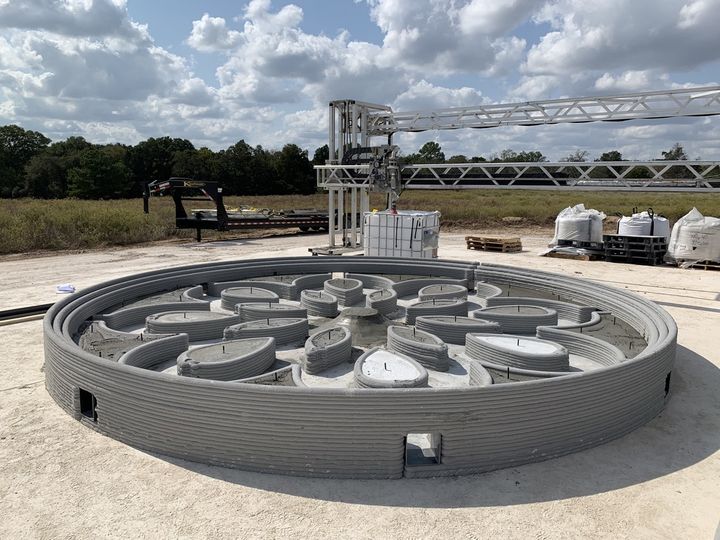
A prototype lunar landing pad has been designed by students and 3D printed by ICON.
The “Lunar Plume Alleviation Device” was 3D printed in a demonstration as part of the NASA Artemis project to enable long-term settlement on the Moon’s surface.
Hold on, why do you need to “alleviate plumes”?
This is a deadly serious problem that has only recently been recognized, and it’s one that the Apollo explorers didn’t notice mainly because they were the only people there.
The problem is that as rocket-powered vehicles descend to the surface, their engines are blasting out volumes of hot gas. That flow strikes the surface, which is largely composed of fine powder. These lightweight particles are pushed strongly away from the landing site in all directions as the engine plume nears.
On Earth plumes are not an issue: friction with air molecules rapidly slows them down and they fall to the ground. But on the lunar surface, there is no air, and thus there’s literally nothing to stop these speeding particles.
The particles can travel very large distances, and I’ve even seen studies that suggest some particles were so energetic that they made it all the way to lunar orbit!
Now imagine if you’re in a lunar habitat a short distance away from the landing site. Whenever a craft lands, your abode is sprayed with microscopic bullets, and some of them will be flying around for weeks afterwards. These could potentially harm surface workers doing EVAs, or mess with delicate equipment.
The game here is to somehow prevent plumes from generating these damaging particle swarms, and that’s a key goal of the Artemis program.
NASA has been working with ICON, a construction 3D printer manufacturer, to rework the technology into a form that can operate on the Moon and make use of in-situ materials. Basically, they want to 3D print structures of many types with local soil (or “regolith” as it is known). One type of structure is a landing pad to avoid plume problems.
You might think the answer is to just provide a flat surface to land on, but that doesn’t really work because the plumes travel quite far in the absence of other air. Instead the goal is to design an innovative structure that can somehow dampen plume effects within a small landing pad area.
There are many possible designs to achieve this, and a team of undergrads from several universities worked together to develop an approach with NASA’s Marshall Space Flight Center that could do the job.
The result, shown at top, is an unusual system of curves that attempt to channel the plume flow to slow it down before it hits the general surface and pick up particles. This was 3D printed at a Texas site with ICON’s latest construction 3D printing system.
This design could be scaled up to whatever size is necessary, as the prototype shown above is not going to accommodate a very large craft.
ICON explains how this will work:
“The pad was comprised of essentially two layers. A ‘roof’ where a rocket launches from or lands on, and a series of channels below that to safely redirect the exhaust. Slits in the roof allow exhaust from rockets to travel into the carefully designed channels that direct the exhaust flow to the edge of the launch pad where it exits through specialized vents. A central cone and dividers support the weight of the rocket and pad roof. A wall surrounds the structure, capturing any lunar dust particles that become mobilized during a launch or landing.”
You might be wondering what kind of feet the landing spacecraft would need to navigate these strange lumps, but don’t worry: there is actually to be a flat “roof” on this structure. The idea is to allow flowing gases to enter through slits and then move through the dampening channels.
One item I’m wondering about is how the roof is produced: it can’t be 3D printed, as construction 3D printers don’t do overhangs. It may have to be separately 3D printed and then moved on top of the main PAD.
This is an ideal application for lunar 3D printers, as it is a large structure that doesn’t require fine detail.
No Artemis equipment or personnel has yet landed on the moon, but when they do, there will be technologies such as this ready for use.
Via ICON
